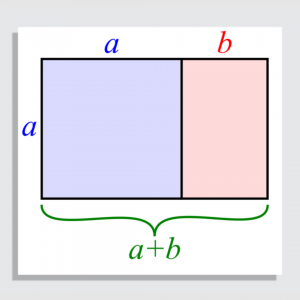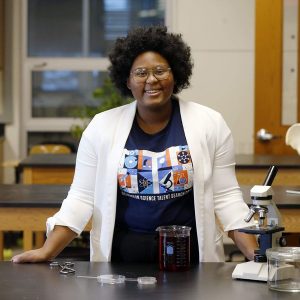Link About It: This Week’s Picks
A high school student’s medical innovation, Star Trek’s decor, NYC’s cannabis legalization and more news

Sesame Street Welcomes Two Black Muppets
 Though Sesame Workshop (the non-profit behind the beloved TV show Sesame Street) continues to cast “a racially and ethnically diverse human cast,” it’s never directly addressed race or racism. This season, that changes with the introduction of two Black muppets, Wesley and Elijah Walker, who will have conversations about what it’s like to be Black in America. According to Time, “a 2019 study by Sesame Workshop, conducted in partnership with the social-research organization NORC at the University of Chicago, found that many parents rarely or never discuss race or ethnicity with their kids,” but people can begin to recognize racial differences as infants. With their influential, educational programming, Sesame Workshop has the power to influence this—and developed Coming Together, “a racial-justice initiative with an educational framework and curriculum” as well as a set of resources it calls the “ABCs of Racial Literacy.” Read more about their efforts at Time.
Though Sesame Workshop (the non-profit behind the beloved TV show Sesame Street) continues to cast “a racially and ethnically diverse human cast,” it’s never directly addressed race or racism. This season, that changes with the introduction of two Black muppets, Wesley and Elijah Walker, who will have conversations about what it’s like to be Black in America. According to Time, “a 2019 study by Sesame Workshop, conducted in partnership with the social-research organization NORC at the University of Chicago, found that many parents rarely or never discuss race or ethnicity with their kids,” but people can begin to recognize racial differences as infants. With their influential, educational programming, Sesame Workshop has the power to influence this—and developed Coming Together, “a racial-justice initiative with an educational framework and curriculum” as well as a set of resources it calls the “ABCs of Racial Literacy.” Read more about their efforts at Time.
Image courtesy of Zach Hyman—Sesame Workshop
New York Legalizes Cannabis With an Emphasis on Equity
 Governor Andrew Cuomo signed the New York State Assembly’s cannabis legalization plan into law, making the state the 15th in the US to do so. The reversal on statewide prohibition permits individuals to possess three ounces of flower or 24 grams of concentrate. Plus, public consumption will be permitted wherever tobacco smoking is already allowed. Other initiatives—at-home growth, lounges for social consumption and delivery services—will be phased into action. More importantly, New York legislators successfully lobbied for equity clauses. 40% of cannabis tax revenue will be allocated to the state’s Black and Latino communities, and those with marijuana-related convictions will see their records expunged—and many of the aforementioned will be permitted to hold licenses in the new legal market. “Unlike any other state in America, this legislation is intentional about equity,” Crystal D Peoples-Stokes, the Assembly’s Democratic majority leader and lead sponsor of this bill, announced. Read more at The New York Times.
Governor Andrew Cuomo signed the New York State Assembly’s cannabis legalization plan into law, making the state the 15th in the US to do so. The reversal on statewide prohibition permits individuals to possess three ounces of flower or 24 grams of concentrate. Plus, public consumption will be permitted wherever tobacco smoking is already allowed. Other initiatives—at-home growth, lounges for social consumption and delivery services—will be phased into action. More importantly, New York legislators successfully lobbied for equity clauses. 40% of cannabis tax revenue will be allocated to the state’s Black and Latino communities, and those with marijuana-related convictions will see their records expunged—and many of the aforementioned will be permitted to hold licenses in the new legal market. “Unlike any other state in America, this legislation is intentional about equity,” Crystal D Peoples-Stokes, the Assembly’s Democratic majority leader and lead sponsor of this bill, announced. Read more at The New York Times.
Image courtesy of Pexels
The Golden Ratio’s African Origins
 The golden ratio (aka the divine ratio)—which formed the foundation for modern Swiss design—was long believed to have originated in Ancient Greece, but evidence suggests it was actually invented in Africa, where the golden ratio, rectangle and spiral were commonly used in almost every imaginable artistic medium. Whether on Kente cloth in Ghana or architecture in Cameroon, diverse sources support this claim. (Additionally, empirical measurements do not support the Greek origins, and “no Greek sources use the phrase ‘golden rectangle’ or suggest its use in design.) The most probable theory now is that 13th-century mathematician Leonardo Fibonacci, who studied in North Africa, brought the golden ratio back to Europe. Read the full story on The Conversation.
The golden ratio (aka the divine ratio)—which formed the foundation for modern Swiss design—was long believed to have originated in Ancient Greece, but evidence suggests it was actually invented in Africa, where the golden ratio, rectangle and spiral were commonly used in almost every imaginable artistic medium. Whether on Kente cloth in Ghana or architecture in Cameroon, diverse sources support this claim. (Additionally, empirical measurements do not support the Greek origins, and “no Greek sources use the phrase ‘golden rectangle’ or suggest its use in design.) The most probable theory now is that 13th-century mathematician Leonardo Fibonacci, who studied in North Africa, brought the golden ratio back to Europe. Read the full story on The Conversation.
Image courtesy of Pbroks13 / Wiki Commons
High School Student Dasia Taylor’s Color-Changing Sutures Detect Infection
 Iowa City West High School student Dasia Taylor utilized beet dye to develop suture thread that changes color when a surgical wound becomes infected. Taylor began working on the concept in October 2019 and this January she became a finalist at the Regeneron Science Talent Search (a prestigious competition for high school seniors). Taylor was motivated by data from infections after Cesarean sections—and utilized the pH of human skin as a biological function the beet dye could react against. Read more about Taylor’s scientific process, her racial equity work and plans for the future at Smithsonian Magazine.
Iowa City West High School student Dasia Taylor utilized beet dye to develop suture thread that changes color when a surgical wound becomes infected. Taylor began working on the concept in October 2019 and this January she became a finalist at the Regeneron Science Talent Search (a prestigious competition for high school seniors). Taylor was motivated by data from infections after Cesarean sections—and utilized the pH of human skin as a biological function the beet dye could react against. Read more about Taylor’s scientific process, her racial equity work and plans for the future at Smithsonian Magazine.
Image courtesy of Society for Science
Scientists Directly Manipulate Antimatter For The First Time
 Antimatter, the mysterious antiparticles that exist with a hypothetical charge opposite that of matter (the building block of the known universe), has finally been directly manipulated by scientists. According to a paper published in the journal Nature, the Antihydrogen Laser Physics Apparatus (ALPHA) project, based at CERN in Geneva, slowed antihydrogen particles down by laser-cooling them toward absolute zero. This is a shocking breakthrough because of the volatility and unpredictability of antimatter and the implications will lead to questions about the very composition of reality. Read more on this development, and what it means regarding our future understanding of the universe, at Vice.
Antimatter, the mysterious antiparticles that exist with a hypothetical charge opposite that of matter (the building block of the known universe), has finally been directly manipulated by scientists. According to a paper published in the journal Nature, the Antihydrogen Laser Physics Apparatus (ALPHA) project, based at CERN in Geneva, slowed antihydrogen particles down by laser-cooling them toward absolute zero. This is a shocking breakthrough because of the volatility and unpredictability of antimatter and the implications will lead to questions about the very composition of reality. Read more on this development, and what it means regarding our future understanding of the universe, at Vice.
Image courtesy of NASA’s Goddard Space Flight Center
From Perriand to Saarinen, The Chairs of Star Trek
 For the last few years, a team of devout Star Trek fans—including Buenos Aires-based 3D artist Tadeo D’Oria—have been carefully identifying every chair in its science fiction universe. Much of what they’ve found happens to be off-the-shelf designs from well-known designers including Charles and Ray Eames, Charlotte Perriand and Eero Saarinen. Sometimes these designs were painted and modified; sometimes they were used as is to represent the 22nd century. It’s the furniture of Saarinen (in particular two variations of his iconic Tulip chair, with organic shapes and plastic composition) that defines much of the space-age vision for some Star Trek iterations. But Norwegian designer Peter Opsvik’s branching Stokke Globe Garden certainly wins the award for most abstract. Read more about the chairs and D’Oria’s work, and find lots of photos, at Fast Company.
For the last few years, a team of devout Star Trek fans—including Buenos Aires-based 3D artist Tadeo D’Oria—have been carefully identifying every chair in its science fiction universe. Much of what they’ve found happens to be off-the-shelf designs from well-known designers including Charles and Ray Eames, Charlotte Perriand and Eero Saarinen. Sometimes these designs were painted and modified; sometimes they were used as is to represent the 22nd century. It’s the furniture of Saarinen (in particular two variations of his iconic Tulip chair, with organic shapes and plastic composition) that defines much of the space-age vision for some Star Trek iterations. But Norwegian designer Peter Opsvik’s branching Stokke Globe Garden certainly wins the award for most abstract. Read more about the chairs and D’Oria’s work, and find lots of photos, at Fast Company.
Image courtesy of Tadeo D’Oria
Link About It is our filtered look at the web, shared daily in Link and on social media, and rounded up every Saturday morning. Hero image courtesy of Tadeo D’Oria











